#tatsuhiro satou
Text


#nhk ni youkoso!#welcome to the nhk#tatsuhiro satou#misaki nakahara#while i don't hate these nhk subs i HAD to change what misaki said#they translated 'shinsetsu na musume desu' as 'i'm a sweet little girl' and that just didn't fit#sweet and kind may sound like synonyms but 'shinsetsu' is a kindness that implies 'helpful' which 'sweet' doesn't#and 'musume' really doesn't feel like it means 'little girl' here#i feel like she would have said 'chiisana musume' if that's what she meant because that emphasizes 'little'#while 'musume' by itself just makes it sound like she's calling herself a young woman#because you know#she's not a little girl#i'm right about this
75 notes
·
View notes
Text

I want to be in your arms. Love and courage are so important in my life~
#welcome to the n.h.k.#nhk ni youkoso!#purin#tatsuhiro satou#satou tatsuhiro#yamazaki kaoru#kaoru yamazaki#i just finished it yesterday? i been looping the song whenever i can#im trying to get over myself bc i am becoming neet and a hikki and im not very proud of it#art#fanart#illustration#digital art#artists on tumblr#adp draws
25 notes
·
View notes
Text






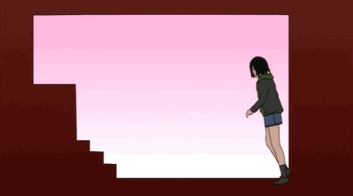

Fave Anime OPs (4/?)— Puzzle by ROUND TABLE feat. Nino
(From: Welcome to the N.H.K)
#welcome to the n.h.k#welcome to the nhk#nhk ni youkoso#nhk ni youkoso!#round table#nino#satou tatsuhiro#tatsuhiro satou#misaki nakahara#nakahara misaki#00s anime#2000s anime#gonzo#suggestive#gif warning#my gifs#saint-miroir: fave anime OPs#this anime resonated a lot with me as a depressed teenager#it's been a long time#need to rewatch
83 notes
·
View notes
Text

28 notes
·
View notes
Text

me after every minor inconvenience
#welcome to the nhk#nhk#satou tatsuhiro#tatsuhiro satou#hikki#hikkikomori#anime#2000s anime#2000s manga#manga#kms#i love welcome to the nhk
2 notes
·
View notes
Text

Welcome to the N.H.K. is a psychological anime series about mental illness and terrible people. Remember, mental illness doesn't excuse your unlikable personality.
4 notes
·
View notes
Text
40 Day Anime Challenge Day 10- A character you despise with all your heart and soul: Almost everyone in Welcome to the NHK (2006)

I was excited to watch this. It had great reviews, and fans raved that it was a realistic and positive portrayal of people with mental health issues. As someone with these myself, of course I was excited.
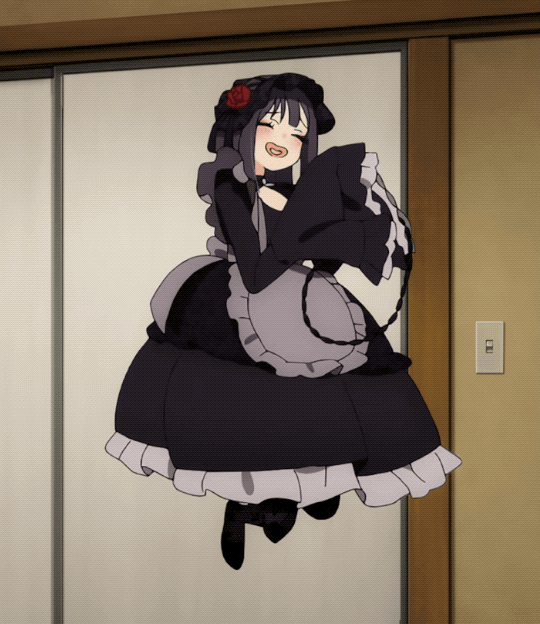
But here are my thoughts after watching the anime:

1) It is not a realistic portrayal of people with mental illness, because the characters are not given much characterization beyond the problematic behaviors of their disorders, no redeeming qualities, and very little character development that was rushed at the end.
2) It is not a positive portrayal of people with mental illness at all. Once again, they are almost entirely reduced to stereotypes, and they’re pretty terrible people. If this is the representation people like me, who has put in a lifetime of therapy and self-reflection to continue overcoming my issues and have healthy relationships, then I fear what those without mental illness would think of me based on what they see in these individuals.
So let’s get to why I despise the characters, yeah? (Spoilers ahead)
Tatsuhiro Sato, our protagonist.
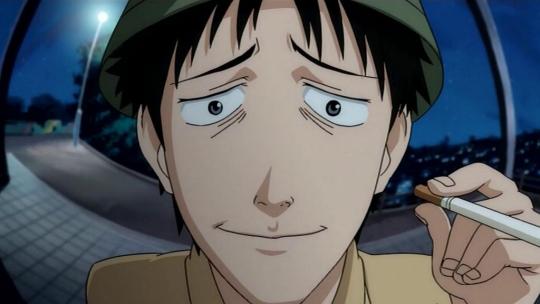
I don’t have a problem with the fact that he is a NEET. I have a problem with the fact that he never got professional help. I have a problem with the fact that he lied to his parents to keep getting their money, and cursed them when they finally cut him off. I have a problem with the way he treated his friends, yelling, name calling, throwing things, and then guilting them into letting him mooch off of them. I have a problem with his attraction to Misaki. First, because she is a teenager, and instead of staying away from her so he doesn’t act on this, he continues to spend time with her, has her pretend to be his girlfriend at one point, uses her as a cook and housekeeper, and ultimately confesses his love and starts dating her. The second reason is that until a rushed confession in the last episode that may not even be genuine because he said it to literally talk her off the ledge, he was only attracted to her physically and because she would do anything he wanted. He told her multiple times that she was a nuisance, a nag, had a terrible personality, etc. He belittled and bullied her through most of the series.
Misaki Nakahara, our wannabe hero.

Clearly, she’s a struggling teen and needs help. What she does not need to do is berate and enable a grown man that she only latches on to because looking down on him helps her feel good about herself (which she admitted to halfway through the series and never worked at changing afterward) She coerces him to go along with her “treatment plan” rather than encouraging him to seek actual professional help. She nags at him, bursts into his home, and often pushes him farther out of his comfort zone than he can handle at the time. She enables his codependency when she starts cooking and cleaning for him, all the while scolding him for not doing it himself, so he learns that he is incompetent and should just let her do everything and accept her criticism when he does. I’ll give her a bit more of a pass than the other characters, because unlike the other characters behaving like children, she is literally a child. But she is still a toxic and manipulative person and her problematic behavior needs to be addressed by her guardians (and a licensed therapist)
Hitomi Kashiwa.
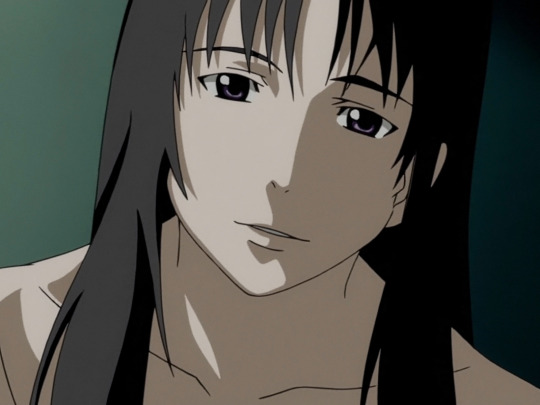
This girl was the catalyst for Sato having a breakdown, always talking about conspiracies. When she comes back into his life, she asks him to join a group she is part of for a trip, not telling him that they are all there to commit suicide! She takes her vulnerable junior, who, despite all his flaws, is at least trying to get himself together, and exposes him to a group exacerbate his depression and he almost gets killed because of it. I haven’t read the manga, but I am told she tries to have an affair with Sato after she is married with a kid. (And the person she is married to, Akira Jogasaki, is so sweet and supportive, he’s the only character I like in this show, so it really hurts to see her betray him like that.)
Kauru Yamazaki, Sato’s best friend, giving otakus everywhere a bad name.

This guy is supposed to be the “functional” one of the group, being the only one who has a job and is in school to pursue a meaningful career. That’s great and all, but he has a shit personality. His life revolves around perving on 2D women, and complaining that real women can never compare because of the imperfections that make them human, like having their own personalities, motives, and goals. He voices this in a way that is very misogynistic, painting women as manipulative. When he finally starts to fall for a human girl, he pursues her after being rejected, gets mad at her for interacting with other males, and has Sato videotape his confession to her without her knowledge for reference for their game. After moving home, he dates a girl who looks just like her, implying that he does not love this girl, but just sees her as a stand-in. And this is the guy Sato goes to for advice, ugh.
Finally, Megumi Kobayashi.
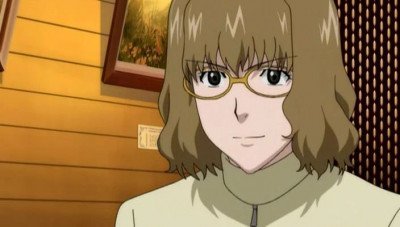
After finding out about Sato’s issues, she lies to him and manipulates him into joining a toxic MLM scheme. Even when he tries to get out, she tricks him multiple times into buying her stuff. Look, I feel sorry for her circumstances, but that doesn’t excuse her behavior.
This show was painful to watch. (Even with Akira Jogasaki carrying the whole show on his back) I don’t know if the manga did any better and never will because I’m never touching this series again. I hate these people. Time to search for an anime that is actually a realistic and positive portrayal of people with mental illness.
#anime#40 day anime challenge#welcome to the nhk#anime review#bad anime#poor portrayal of mental illness#terrible people#tatsuhiro satou#misaki nakahara#hitomi kashiwa#kaoru yamazaki#megumi kobayashi#codependancy#unlicensed therapy#manipulation#toxic people#mental illness does not excuse being a terrible person#shows i hate#not sorry
3 notes
·
View notes
Text
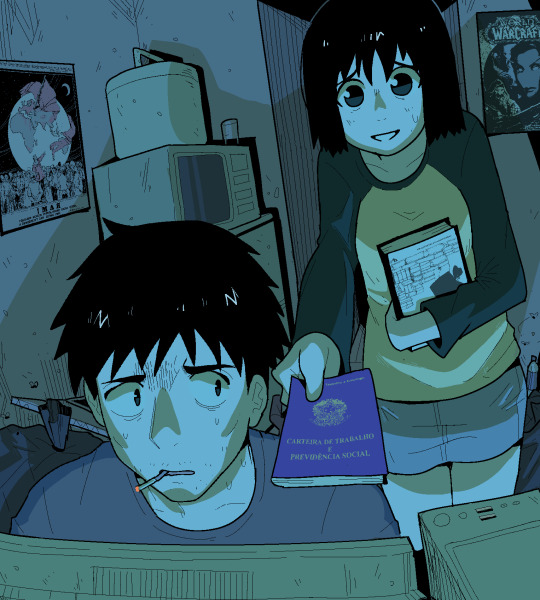
274 notes
·
View notes
Photo
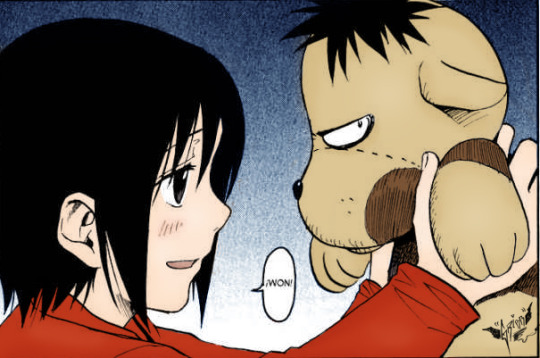
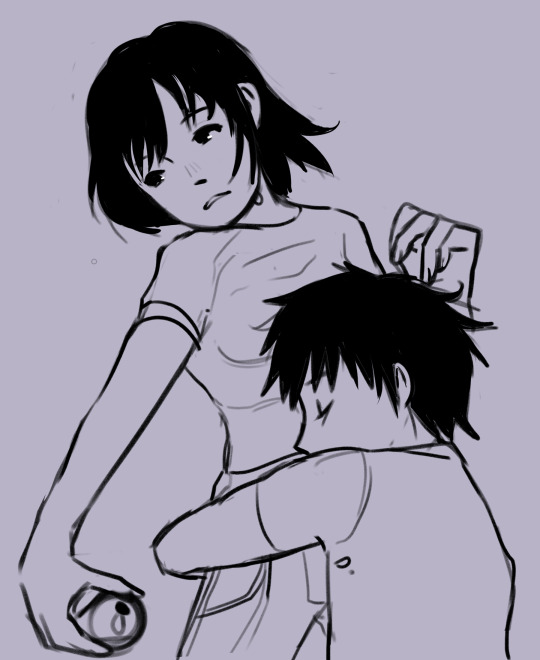
89 notes
·
View notes
Photo

Me and the crazy girl I pulled by being the only one worse than her
147 notes
·
View notes
Text
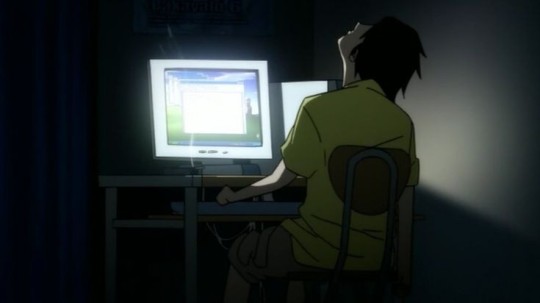
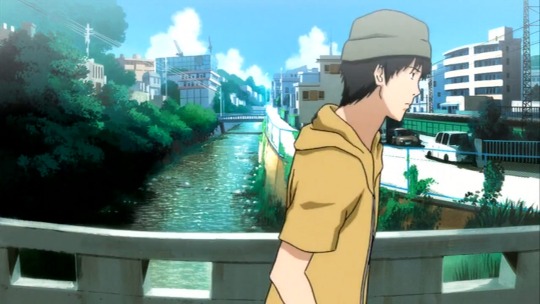
#nhk ni youkoso#welcome to the nhk#satou tatsuhiro#loneliness#nothing to do#doomer#doomerwave#everything seems pointless
11 notes
·
View notes
Text

24 notes
·
View notes
Text
love when Satou is like “ha! joke’s on them, I’m never gonna do this thing, like, it’s so ridiculous to even think I’d consider it! do they think I’m an idiot? besides, why would I even do this thing, since I’m a hikikomori? it’s so stupid! but actually, I’d thought about doing this thing already, but separately from when they told me to! I’m just being independent, and they’re trying to stifle me! that’s so foolish of them, I was actually gonna do this thing all along, and they couldn’t even figure out that I’d been planning this for ages! I am gonna do this thing, and they’ll regret ever asking me to do it, I’ll show them!”
5 notes
·
View notes
Text
youtube
Satoucore
0 notes
Text
Welcome to the NHK novel review

Welcome to the NHK, despite being published over twenty years ago at this point, is still as relevant as ever. In fact, it’s only become more relevant as time has gone on. Not just the phenomenon of being a hikikomori, more commonly known today as being a ‘NEET’ (Not in Education, Employment, or Training), has grown in the last twenty years, but conspiratorial thinking has as well. Especially ever since
the COVID lockdowns began, conspiracy theories have been thrown into the mainstream. The difficult part about conspiracy theories is that while most of them are bunk, there’s a tiny percentage of them that make sense, or even rarer, aren’t conspiracies and things that actually happened. The most common conspiracy theory right now that is nonsense is QAnon. Well, at least four-fifths of the population believes that. Compare that JFK was killed in a conspiracy, which more than half the population has believed ever since the CIA popped him. Conspiracy theories fill in the gap in the middle, which replaces the unknown with what you want to believe. With many things with unknown origins permanently affecting our lives, conspiracy theories have grown significantly. This makes Welcome to the NHK feel like a contemporary read, even though the book is old enough to drink alcohol now.
The conspiracy that Tatsuhiro Satou, the main character of Welcome to the NHK, believes in isn’t anything related to anything that’s a real-life conspiracy. He’s smart enough to acknowledge that most conspiracy theories come from people projecting their own insecurities onto others. Despite all of this, he still ‘stumbles’ upon a conspiracy. A conspiracy that only he knows about, and one that came to him while he was tripping on a hallucinogen (named ‘White Drug’). He comes to the ‘realization’ that the NHK, the Japanese equivalent of the BBC or NBC, doesn’t for “Nippon Housou Kyoukai (Japanese Broadcast Association)”, but actually stands for “Nihon Hikikomori Kyoukai (Japanese Hikikomori Association)”.
Basically, the gist of the conspiracy is that the NHK wants to increase the number of hikikomori in Japan. In the novel, there are stated to be already two million hikikomori in Japan alone, which means that the NHK has done a good job. They ‘maintain’ this amount, and increase it, by broadcasting content that caters to the hikikomori (stuff like anime). This is a conspiracy that Satou doesn’t bother spreading across the internet, but is honestly one that could take off if it was about, say, CNN.
One day, Satou is approached by an odd girl, named Misaki Nakahara, who claims that she can save him from his hikikomori lifestyle. She coerces him into signing a contract, which ‘binds’ him to meet her at the park behind his apartment every night after dinner. These meetings, which are meant to help Satou return to ‘normal life’, mostly are her reading beginner-level psychology and philosophy books that she rented from the library. It’s questionable if these meetings are helping Satou, but he can’t afford to not come–if he breaks the contract, he’ll have to pay a one million yen fine.
Satou’s neighbor, and a former junior in the Literature Club back in high school, Kaoru Yamazaki, is his partner in crime (quite literally). Being an otaku, he and Satou share a lot of the same feelings of insecurity and loneliness. Yamazaki, however, isn’t a hikikomori–he’s currently at university to become a game creator, against his family’s wishes of taking over his father’s business. Yamazaki and Satou, while being terrible influences on each other, are the closest things each one of them has to a support system.
For Satou to escape being a hikikomori, and for Yamazaki to make it big in the game industry (and avoid being forced to take over the family business), they decide to create an eroge game. As you would expect from someone who has been a hikikomori for four years and a hopeless otaku, their eroge game is half-baked, and might as well be dead on arrival. This is one of the things that make Welcome to the NHK so relatable–the feeling of having a great idea, and finally getting the courage to put the pen to paper, only to find out that it’s very hard to create games. Being an eroge game, the scenario Satou has to write doesn’t have to be the best, but even writing sex scenes is hard, or at the very least embarrassing to type. Part of this roleplay that Satou and Yamazaki are doing is escapism from what seems like their destiny. Satou and getting a job, and Yamazaki and taking over the family business. If Satou can prove that he’s busy, then his family won’t feel obliged to force him to move back. If Yamazaki can make something that sells, then he can afford not to go back home.
If you’ve already seen the Welcome to the NHK anime, then you already know the general plot. The Welcome to the NHK anime adaption was different from most other novel adaptations, in the sense that this volume is the only entry into the series. The anime has original arcs that aren’t in the novel, and the drug use in the novel is way more noticeable. I appreciate this version since it’s the original version. While it’s rougher on the edges than the anime, it feels more real. Part of this is because we get to read into Satou’s thoughts more in the novel–another part is because the author of this novel, Tatsuhiko Takimoto, was a hikikomori at the time of writing Welcome to the NHK. Having first-hand experience of being a hikikomori, writing what is partially a story about himself had to be very tough to do. It does make me hope that the lolita part was conjecture–either way, it does show how depraved one can get after an extended period of no human contact. Satou, for better or worse, isn’t part of society. One part that binds pretty much all hikikomori and NEETs together is a lack of social skills–it’s hard to get ahead if you can’t associate with others. Satou nearly obtains a part-time job near the beginning of the novel, but freaks out and runs out of the establishment before even getting an interview.
I have to admit that part of my admiration for Welcome to the NHK is due to nostalgia. It was one of the first anime that I watched back when I first got into watching anime. I downloaded the novel back then but never read it. It’s a shame since the Welcome to the NHK novel has bits original to it. It’s also a change from most light novel series, which can potentially drag on forever due to sales. While the novel and anime were successful, there hasn’t been any new content since the manga ended in 2007. There easily could have been more novels written with the added content the anime had, but there weren’t. And that’s a good thing. Too often a series gets ruined by outstaying its welcome and not knowing how to end. Welcome to the NHK knows when to end, because really, there isn’t a way to ‘solve’ being a hikikomori. There’s not much inherently wrong with being one too, as long as you have your wits about you (which Satou fails at miserably). For all we know, Satou could still be a hikikomori today, twenty years later.
I call Welcome to the NHK a ‘novel’, and not a ‘light novel’, since it isn’t one. While it reads like one (it is a light read), there aren’t any illustrations in the book besides the cover (which was drawn by the same illustrator who did the character designs for Serial Experiments Lain), which is the biggest tell. Welcome to the NHK lacks the vapidness that light novels often have, willing to be disgusting. Welcome to the NHK has more in common with novels such as No Longer Human than its contemporaries that also got an anime adaptation. Satou is about as vile, if not more, than Oba (the main character of No Longer Human), and both novels are semi-autobiographical. Welcome to the NHK is more of an ‘I-novel’ than a ‘light novel’, or rather, an I-novel written in the style of a light novel.
The rather painful nature of this novel, which comes with the territory of writing about something that affects you, also means that it’s unlikely to ever be any new Welcome to the NHK novels. I’ve been proven wrong before, but the apparent psychological toll writing this took leaves me to believe that Tatsuhiko Takimoto won’t be bothered to do it again, even if it was a winning formula. In the second afterword of the novel, Takimoto states that he hasn’t written a single new story since he wrote Welcome to the NHK and that he ‘returned’ to being a NEET, “living as a parasite on the royalties from this book”. I argue that he in fact isn’t living as one, since he’s living off of his work, which sold quite rather well. Well enough to warrant an official English translation. There’s also the fact that being a writer isn’t a regular 9 to 5 job–meaning that authors who ONLY write for a living are as much as ‘parasites’ as Takimoto is. Writers aren’t in a constant state of writing. Well, some may think they are, but the point is that Takimoto sees this book as something agonizing to think about, not his crown jewel. Ever since writing that second afterword in 2005, Takimoto thankfully has been able to write some original stories. None of them have made it big like Welcome to the NHK has, however.
If you were a fan of the Welcome to the NHK anime, then I one thousand percent recommend you to read the novel. It’ll connect to you the same way the anime does, and maybe even more if you also participate in recreational drug use. Really, knowing that Satou is high during most of the novel makes his nonsensical actions make a lot more sense. The Welcome to the NHK novel is also different enough from the anime that you won’t feel like you’re reading a screenplay.
Normally, I would end the review here, but seeing as there’s no reputable place to buy the English edition of Welcome to the NHK at the current moment, the only way you’d be able to read this is by reading it here. Don’t worry, it’s legal. Here’s hoping that it gets reprinted one day.
80/100
72 notes
·
View notes
Text
reminder for people about to watch nhk ni youkoso: satou tatsuhiro is supposed to be a good role model. you are supposed to identify with him and emulate his actions
10 notes
·
View notes